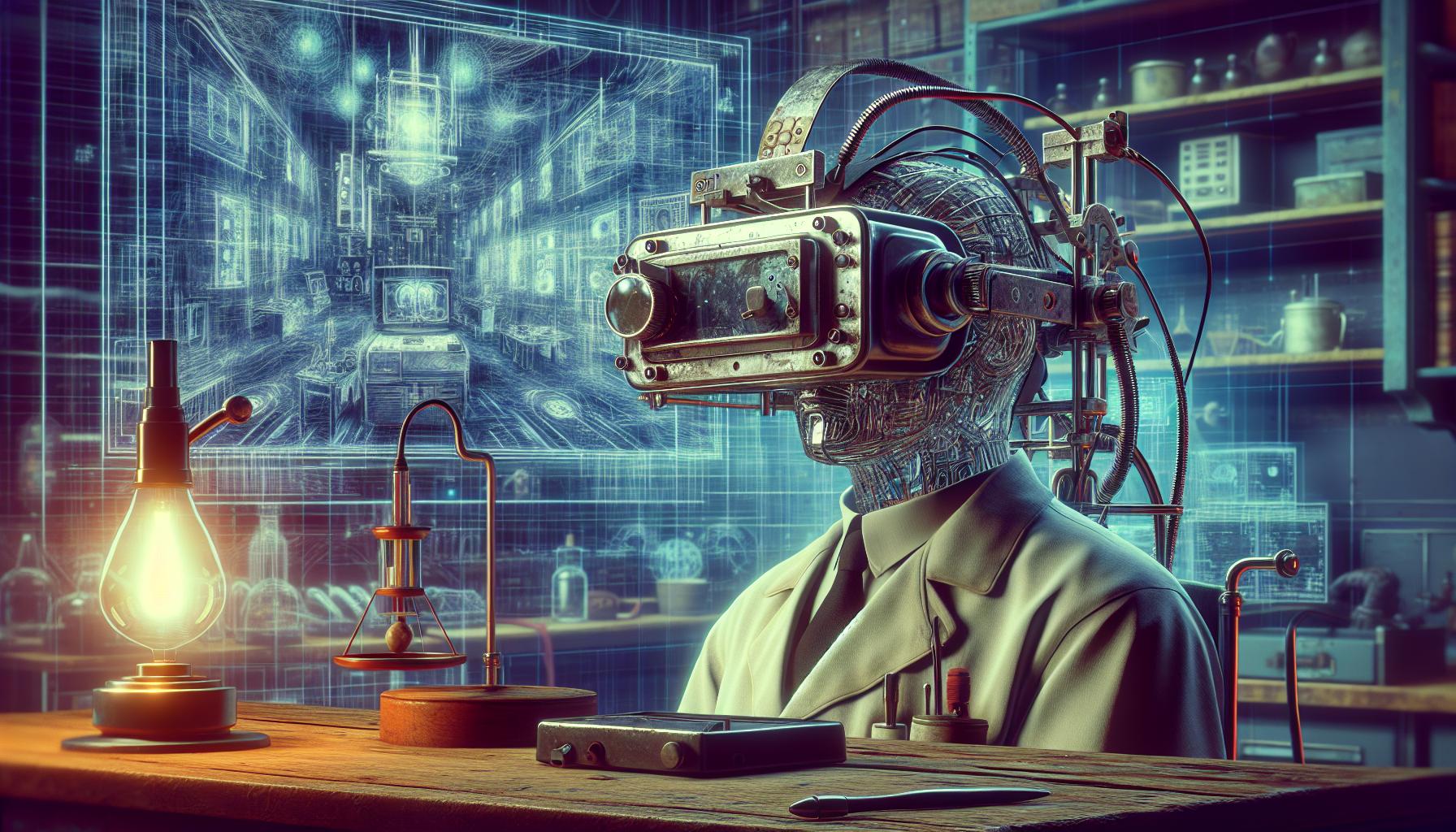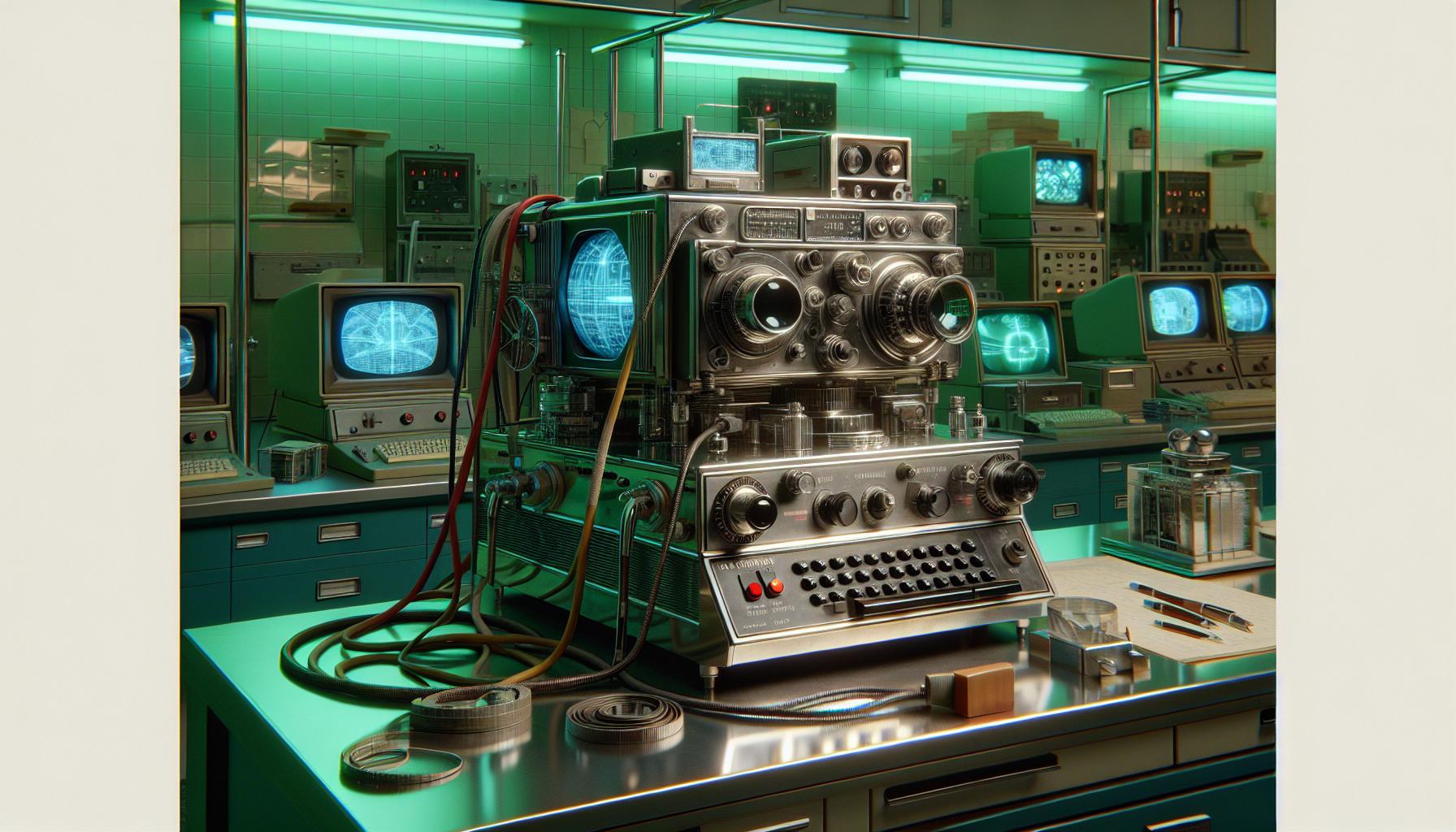Key Takeaways
- Historical Evolution: Virtual reality began in the 1960s, with milestones like Morton Heilig’s Sensorama and Ivan Sutherland’s head-mounted display paving the way for future innovations.
- Key Concepts: Important aspects of VR include immersion, interactivity, simulation, and presence, all essential for creating engaging virtual experiences.
- Cross-Industry Applications: Today, VR is utilized across diverse sectors, including healthcare, education, real estate, and entertainment, showcasing its versatility and impact.
- Technological Advancements: Modern advancements in head-mounted displays, motion tracking, haptic feedback, and AI are reshaping user experiences and enhancing realism in VR environments.
- Future Trends: Emerging trends suggest a growing integration of AR with VR, advancements in 5G technology, and an increase in social VR platforms, pointing towards a more interconnected virtual landscape.
- Challenges and Innovations: The VR industry faces challenges like high equipment costs and user motion sickness but presents opportunities for growth through increased investment and improved accessibility.
Virtual reality has come a long way since its inception, evolving from a mere concept into a groundbreaking technology that reshapes how people interact with digital worlds. Its roots trace back to the 1960s, when pioneers began experimenting with immersive experiences. As technology advanced, so did the potential for virtual reality, leading to innovations that captivated imaginations and transformed industries.
Today, virtual reality isn’t just for gamers; it finds applications in education, healthcare, and even therapy. As it continues to develop, understanding its history reveals how far it’s come and where it’s headed. This journey through time highlights the key milestones and visionary minds that have propelled virtual reality into the mainstream, promising an exciting future filled with possibilities.
History of Virtual Reality
Virtual reality (VR) represents a simulated experience that can mimic or alter the real world. It immerses users in a computer-generated environment, allowing interaction through specialized equipment.
Definition and Key Concepts
VR involves several key concepts, including:
- Immersion: The experience of being physically present in a non-physical world, achieved through sensory experiences.
- Interactivity: Users can engage with the virtual environment, influencing their experiences and outcomes.
- Simulation: VR creates scenarios that replicate real-life situations or imagine new possibilities, utilizing graphical and auditory elements.
- Presence: The psychological sensation of “being there” enhances the experience, making it feel authentic.
- Technological Advancement: VR capabilities advanced significantly since the 1960s, impacting various sectors.
- Cross-Disciplinary Applications: VR’s relevance spans healthcare, education, training, and entertainment, indicating its broad utility.
- Cultural Impact: VR influences social interactions and entertainment, shaping how audiences engage with content.
- Future Innovation: As technology evolves, VR will likely lead to novel applications and enhancements in user experiences, creating an influential path in several fields.
Early Beginnings of Virtual Reality

Virtual reality’s early beginnings revolves around significant theoretical concepts and pioneering technologies that laid the groundwork for future advancements. Key milestones from the 1960s and 1970s shaped the VR landscape we recognize today.
Theoretical Foundations
Theoretical foundations of virtual reality emerged from computer science and psychology. The concept of simulation became critical, emphasizing how technology could replicate real-life experiences. Morton Heilig’s Sensorama, developed in 1962, exemplified this approach. It combined visuals, sound, and tactile sensations to create a multi-sensory experience. Heilig’s work provided a framework for immersive environments, influencing later VR technologies and expanding understanding of human perception in simulated settings.
Pioneering Technologies
Pioneering technologies marked the dawn of virtual reality development. In 1968, Ivan Sutherland introduced the first head-mounted display (HMD), known as the “Sword of Damocles.” This groundbreaking device overlayed simple computer-generated graphics onto the user’s view, establishing the concept of immersive visual experiences. Following this, in the 1970s, the Computer Graphics Lab at NASA developed the VITAL system, which allowed users to interact with 3D spaces using real-time processing. These technologies created momentum in the quest for more sophisticated VR applications, paving the way for future innovations in the field.
Development Through the Decades

The development of virtual reality (VR) spans several decades, marked by both significant breakthroughs and periods of stagnation. Each era contributed uniquely to the technology’s evolution.
1960s to 1980s: The Formation Years
The 1960s set the groundwork for VR with experimental devices that laid the theoretical foundation. Morton Heilig’s Sensorama in 1962 integrated visuals, sound, and tactile feedback, showcasing multi-sensory engagement. In 1968, Ivan Sutherland created the first head-mounted display (HMD), the “Sword of Damocles,” which offered users immersive visuals, albeit with limitations due to heavy hardware. The 1970s introduced NASA’s VITAL system, allowing users to interact within 3D environments, driving early interest in VR applications. The advancements of this period emphasized early attempts to immerse users in simulated realities, paving the way for future exploration.
1990s: Rise and Fall of Commercial VR
The 1990s witnessed a surge in commercial interest in VR, highlighted by products like Sega’s VR headset and Virtuality’s arcade systems. Gaming companies attempted to captivate consumers with immersive experiences, but high costs, technological limitations, and lukewarm reception led to a rapid decline. The promise of VR faced disappointment from consumers struggling with motion sickness and poor image quality. By the end of the decade, many companies abandoned their VR initiatives, marking a significant downturn in commercial prospects yet gathering insights for future innovations.
2000s: Technological Advancements
The 2000s brought notable technological advancements that revitalized interest in VR. Improvements in computer graphics, processing power, and display technologies enhanced visual fidelity and user interaction. Emerging devices, like the Oculus Rift prototype developed in 2012, reignited enthusiasm for VR among developers and gamers. Advances in motion tracking and haptic feedback added layers of realism. Moreover, the burgeoning fields of mobile technology and gaming set the stage for widespread adaptation, indicating a shift toward practical applications in various domains, such as training simulations, education, and healthcare. As a result, the groundwork laid during this decade spurred future breakthroughs in VR technology.
Modern Era of Virtual Reality

The modern era of virtual reality (VR) highlights significant technological innovations and diverse applications across various sectors. This phase marks a pivotal transformation in how users interact with virtual environments.
Current Technologies and Innovations
Virtual reality technologies have evolved significantly. Key innovations include:
- Head-Mounted Displays (HMDs): Devices like the Oculus Quest and HTC Vive offer standalone experiences with improved resolution, field of view, and comfort. These advancements enhance visual fidelity and immersion.
- Motion Tracking: Technologies such as inside-out tracking and external sensors allow precise movement detection, creating a responsive experience. Companies employ these systems to enhance user engagement.
- Haptic Feedback: Haptic technology simulates touch sensation through wearable devices, increasing realism in VR environments. This advancement introduces tactile experiences that mimic real-world interactions.
- Real-Time Rendering: Engine advancements, like Unreal Engine and Unity, enable high-quality graphics in real-time. This progress allows developers to create visually stunning and interactive simulations.
- Artificial Intelligence (AI) Integration: AI enhances VR experiences by personalizing content and optimizing user interactions. Intelligent systems adapt scenarios based on user behavior, making experiences more engaging.
Popular Applications in Various Industries
Virtual reality’s applications extend beyond gaming into numerous fields, including:
- Healthcare: VR assists in medical training and therapy. Simulators train healthcare professionals in surgical techniques, while therapeutic VR helps treat phobias and PTSD.
- Education: Educational institutions utilize VR to create immersive learning experiences. Students engage with 3D models and virtual field trips, enhancing comprehension and retention.
- Real Estate: VR allows potential buyers to tour properties remotely. Real estate companies use virtual walkthroughs to showcase listings, saving time and resources.
- Entertainment: The entertainment industry leverages VR for immersive gaming experiences and virtual concert attendance. Developers create multi-sensory environments that captivate audiences.
- Military and Defense: VR training programs prepare personnel for combat scenarios. Simulations develop crucial skills and reduce risks associated with live training exercises.
These technologies and applications illustrate VR’s transformative impact across various sectors, solidifying its role as a versatile tool for innovation and engagement.
Future Prospects of Virtual Reality
Virtual reality (VR) continues to evolve, offering transformative potential across various sectors. Emerging trends and challenges shape the landscape for future advancements in VR technology.
Emerging Trends and Predictions
Emerging trends in VR indicate a shift toward more immersive and interactive experiences. Increasing integration of augmented reality (AR) and VR blurs the lines between virtual and real environments. As 5G technology expands, latency decreases, enabling more seamless and responsive VR interactions. Predictions suggest the rise of social VR platforms, enhancing collaborative experiences in virtual spaces. The adoption of enterprise VR applications is expected to grow, with businesses utilizing VR for training, design simulations, and enhanced customer experiences.
Challenges and Opportunities
Challenges in the VR industry include high costs of equipment, the need for user-friendly interfaces, and motion sickness perceptions among users. Addressing these challenges can lead to significant opportunities for growth. Increased investment in VR research and development encourages innovative solutions and affordable devices. Expanding access to VR technology through mobile platforms and cloud computing enhances user engagement. By overcoming technical barriers, VR enhances its value in education, healthcare, and remote work environments, solidifying its future as a pivotal technology.
From Experimental Concepts to a Mainstream Technology
The journey of virtual reality showcases its remarkable transformation from experimental concepts to a mainstream technology. As VR continues to evolve it promises to redefine how individuals interact with digital environments. With its growing applications across various sectors the potential for innovation remains vast.
Emerging trends like augmented reality integration and advancements in connectivity will further enhance user experiences. While challenges persist the future of VR looks bright with opportunities for expansion and deeper engagement across industries. This technology is not just a passing trend but a significant force shaping the way people connect learn and experience the world around them.